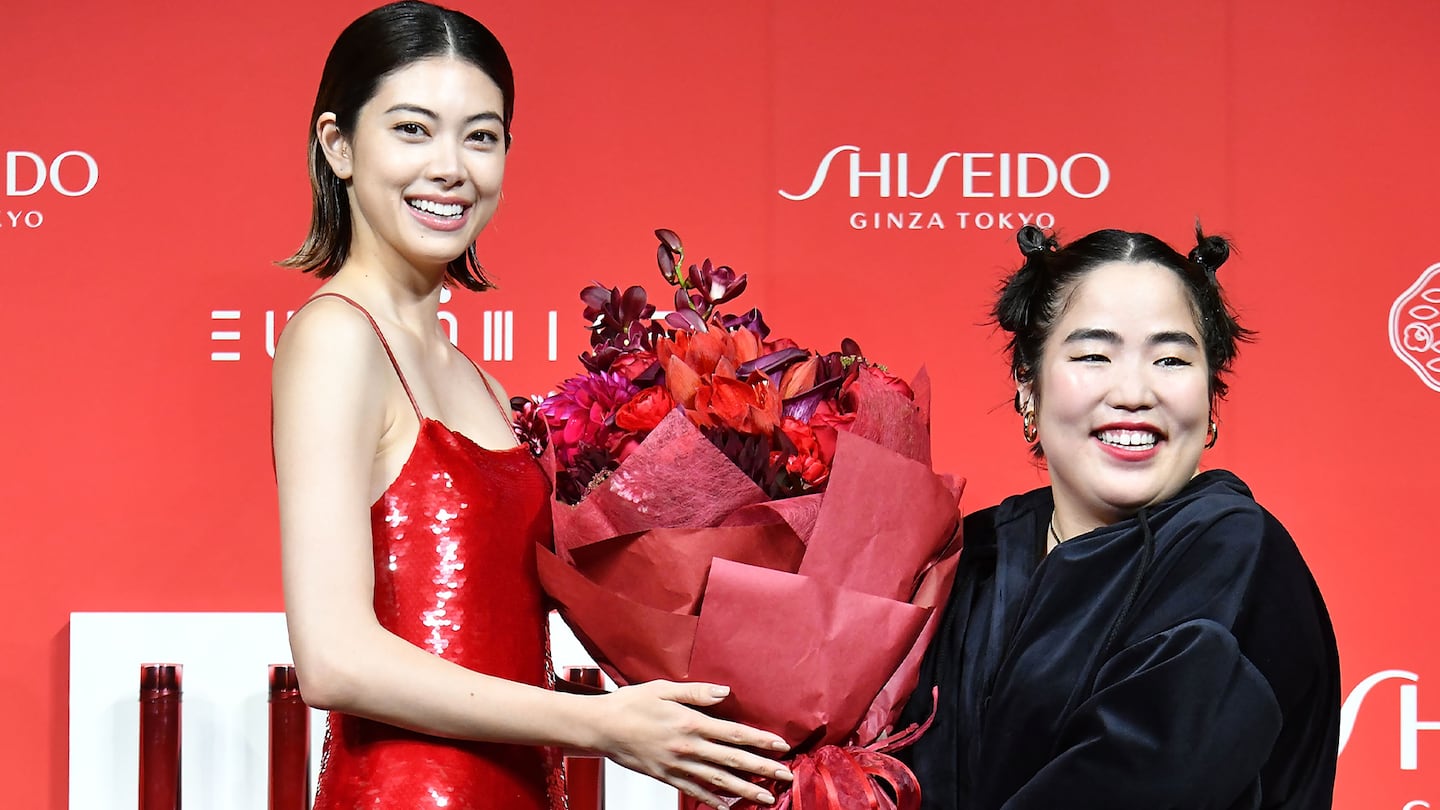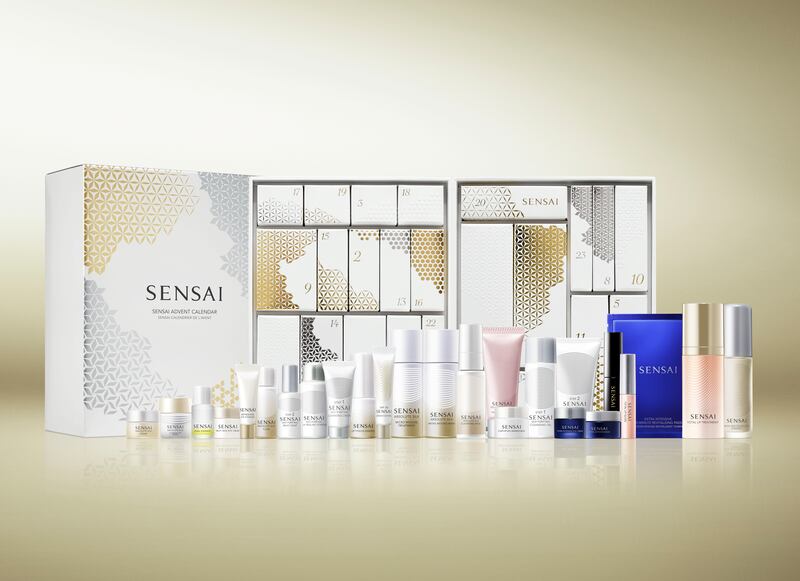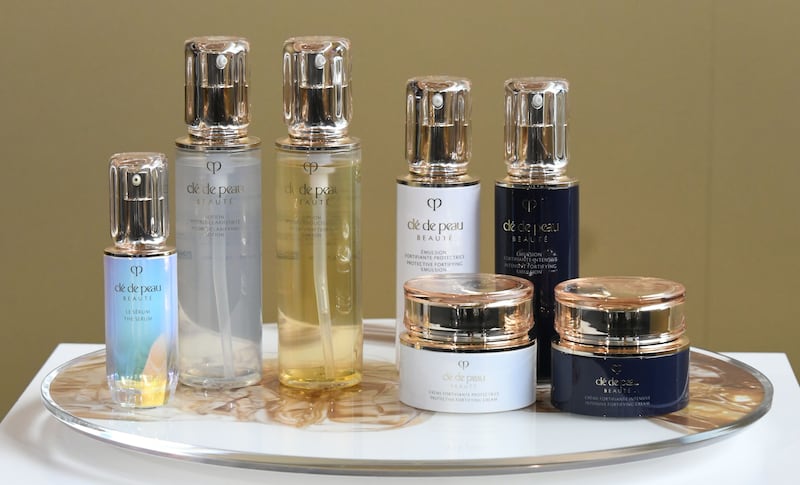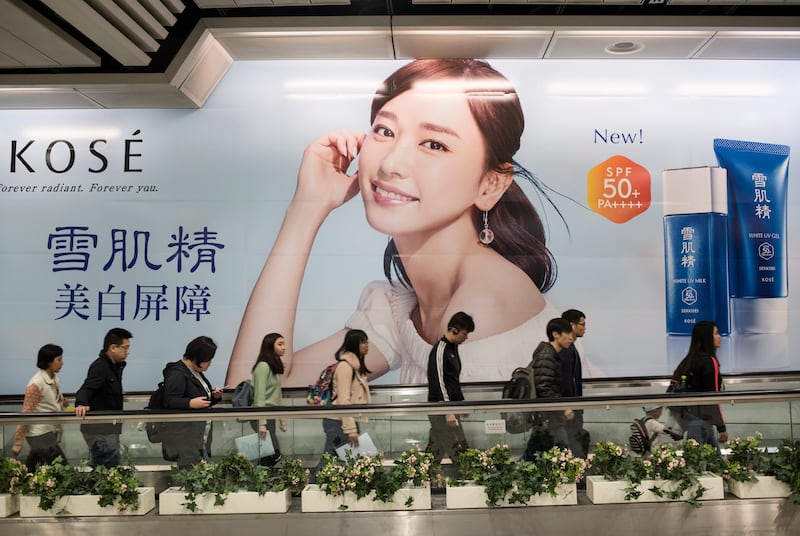
The Business of Fashion
Agenda-setting intelligence, analysis and advice for the global fashion community.

Agenda-setting intelligence, analysis and advice for the global fashion community.

Though sun care is a mature industry in Japan, the category hasn’t performed all too well in recent years. According to Mintel, the country’s market for sunscreens, self-tanners and after sun products decreased in value by 12.7 percent in 2022, compared to a surge in other markets, such as the UK, which registered 20.4 percent growth.
Given such figures, it may come as a surprise that Tokyo-based beauty conglomerate Kao Corporation in August announced its acquisition of Australian sun care brand Bondi Sands, which is known for its self-tanning products and sunscreens. Rather than adding to an already saturated sun care space in the Japanese market, Bondi Sands represents Kao’s increasingly global ambitions.
“It is our strategy to grow Kao’s overall business globally, specifically outside Japan,” said Kao’s vice president of business planning and cosmetics business, Yasuhiro Taguro, adding that hair and skin care categories are a focal point for the company with skin protection being a particular emphasis.
The Bondi Sands acquisition fits the bill and is intended to help Kao attain what it describes as a “global sharp top,” or a leading position in the category globally, Taguro added. The company’s portfolio already includes foreign brands Oribé, John Freida and Molton Brown as well as premium local beauty players Kanebo, RMK and Suqqu alongside mass market brands Bioré and Curel.
ADVERTISEMENT
Kao is not the only Japanese beauty group making international M&A moves. Shiseido’s European subsidiary acquired London-based microbiome-focused skin care brand Gallinée in September 2022 — a year after its chief executive Masahiko Uotani signalled plans to escalate skin care acquisitions and grow its business beyond Asia (more specifically mainland China) in an interview with the Financial Times. Shiseido Company (the group that owns the namesake brand) declined to comment on its M&A strategy for this story.
But Shiseido, which during a major restructuring sold off US beauty brands BareMinerals, Buxom and Laura Mercier, as well as its personal care business to CVC in 2021, appears to have its sights set on the luxury and premium space in line with previous international acquisitions Nars and Drunk Elephant. It is also investing in overseas expansion for its Japan-founded luxury brand Clé de Peau Beauté through travel retail and celebrity ambassador appointments like American actors Diana Silvers and Dakota Fanning and British actor Ella Balinska.
The country’s third largest beauty company Kosé, which owns brands like Decorté, Sekkisei, Addiction, Jill Stuart Beauty and Tarte, is also looking to grow its presence in overseas markets but hasn’t made any recent acquisitions. However, that could change if a recent interview with the company boss is anything to go on.

“Ever since I joined this company, I was strongly of the view that Kosé needed to go beyond Japan and Asia and into a more global market,” group president and CEO Kazutoshi Kobayashi recently told travel retail industry media The Moodie Davitt Report.
“I think that it is essential we do more M&A going forward,” Kobayashi added before underlining his goal for the group to rank among the top 10 global beauty conglomerates. “In order for us to achieve that, Decorté and Sekkisei alone is [sic] not going to be enough.”
Elsewhere, Tokyo-based Pola Orbis, which owns premium anti-aging brand Pola, skin care brand Orbis and French company Jurlique, has also named M&A and venture capital investment as a key part of its management plan for the years 2024-2026.
The motivations for Japanese firms looking to invest overseas may be varied but why are they united in their timing?
Though the country’s beauty market proved more resilient than sectors like fashion, it is still recovering from the pandemic, says Aya Suzuki, senior research analyst at Euromonitor International.
ADVERTISEMENT
While categories like colour cosmetics, sun care and fragrances saw double digit growth from 2021 to 2022 and “continue to grow in mid-high single digits” in 2023, the first two have yet to return to pre-Covid levels, Suzuki told BoF. Euromonitor data reveals that the combined market size of Japan’s skin care and colour cosmetics markets is projected to be worth 2.6 trillion yen ($17.5 billion) in 2027, well below 2019′s 2.8 trillion yen ($18.7 billion).
Select categories like fragrance and men’s beauty are showing momentum in the crowded domestic market, but dampened consumer confidence — as a result of inflation, a shift towards mid- and lower-priced products and post-pandemic lifestyle changes — continue to hit beauty companies’ bottom lines.
Moreover, hopes for a Covid-induced e-commerce boom fell flat compared to other markets, notes Reiko Hasegawa, a Japan-based senior beauty and personal care analyst at Mintel.
Observers also cite the likelihood that Japanese beauty conglomerates are feeling pressure from dynamic competitors not only in Europe and the US but in other Asian countries, where local giants have increasingly global ambitions. For instance, South Korean group Amorepacific’s 2020 investment in Australian skin care brand Rationale was followed by rival LG H&H’s acquisition of American cosmetics brand The Crème Shop in 2022. Both have also invested in local K-beauty brands with a strong overseas consumer base, some of which are now enjoying a resurgence.
In Japan, where the domestic market remains subdued, local J-beauty companies need to prioritise revenue streams from overseas brands and consumers. In Shiseido’s medium term strategy plan ‘Shift 2025 and Beyond’, announced in February, the group vowed to expand its portfolio in China, “establish a business foundation” in the wider Asia-Pacific region, “build a foundation for growth” in the Americas and “achieve profitable growth” in Europe, the Middle East and Africa.
The Asia-Pacific region accounted for 70.6 percent of Shiseido’s global sales in 2022, making it necessary for the group to grow and diversify by not only acquiring global brands but localising those they already own in key markets. “Global beauty competitors are less dependent on Asia Pacific compared to Shiseido,” Euromonitor’s Suzuki noted, citing L’Oréal’s 26.0 percent, Estée Lauder’s 34.7 percent and LVMH’s 27.7 percent shares.
Thanks to its comparatively high brand awareness and long presence in overseas markets, Shiseido may have some advantages over Japanese groups looking to acquire international brands. However, it must also contend with competition from the big players in western markets.

Most mergers and acquisitions “by Japanese beauty companies are not focused on Asia, which is their current source of revenue, but on Europe or the US, where their sales are relatively small,” said Suzuki. “This is to expand… the next pillar of revenue, as well as to acquire technologies and innovations that are in demand locally.”
ADVERTISEMENT
Take Kao, which divides its cosmetics business into brands positioned for global development and brands the group plans on developing mainly in Japan and other Asian countries. “We will particularly increase the weight of investment in [our global] brands,” said Taguro, referring to Sensai, Molton Brown and Curel.
Volatility in China is the elephant in the room, and a major risk factor. Sino-Japanese tensions spiked in recent months after Japan began discharging treated wastewater from its Fukushima nuclear plant into the Pacific Ocean. If the ensuing boycott of Japanese products grows beyond a nascent movement, it could hit brands where it hurts. Shiseido, which according to Bloomberg data depends on the Chinese mainland for around 30 percent of its overall business, saw shares fall 3.3 percent in August. Other groups like Pola Orbis and Kosé also saw declines.
“[Patriotic consumption trends in China] and the loss of inbound tourism to Japan during Covid-19 have affected us, as well as other Japanese brands,” Kao’s Taguro said.
Mintel’s Hasegawa notes that where Japanese beauty brands tend to have a more premium positioning in China than Korean rivals, the former need to justify their higher price points to keep up with competition in the cutthroat space.
Considering the dominance of Korean brands across the continent (in particular emerging but lucrative regions like Southeast Asia), it’s no surprise that J-beauty groups are seeking growth away from markets already highly saturated by K-beauty players. Nor is it shocking that the Japanese are angling for luxury and premium priced M&A targets that typically come with higher profit margins than K-beauty’s accessibly priced offering abroad.
For the likes of Kao, targeting overseas beauty brands with a firm foothold in markets like Europe and the US is a faster (and less risky) route to growth than exporting a Japanese name with a highly localised product formulation, USP and brand identity — let alone building a global brand from scratch.

“When a [Japanese beauty company] that’s very well-versed in the domestic market wants to reach the global market, there isn’t the same dexterity in the dialogue,” said Valeria Baker, a Tokyo-based brand and marketing strategist at advertising and PR giant Dentsu. “There’s a different pace, a different way of communicating. Through a global acquisition they can universalise their communications [across the portfolio] to reach a broader audience.”
If investment targets are chosen and developed well, international brands can also help Japanese beauty giants adapt to an increasingly polarised market at home where growth is in the premium and affordable ends of the spectrum. “A significant trend in the Japanese market is the decrease in sales for mid-priced products, which used to be a defining characteristic,” said Kao’s Taguro.
To make the most of this, Kao announced in April a unified leadership team for its luxury brands Sensai, Suqqu and Molton Brown across the Americas, Europe, the Middle East and Africa, which will be headed by Mark Johnson, formerly the global president of Molton Brown. Other Japanese players are believed to be considering management shake-ups or restructuring efforts in a bid to extend their overseas ambitions.
Where might Japanese beauty groups focus their M&A efforts next? Dentsu’s Baker raises cruelty-free and vegan products as one likely priority. Acquiring a trusted global name in this space would benefit companies both at home and abroad.
“A lot of the [J-beauty] traditions involve proteins and collagen from animals,” Baker said. “[Now] there’s a desire for [cruelty-free and vegan but] there aren’t a lot of brands with high quality products in the category…People are so ready for it, but very few brands offer it.”
The Tokyo-based group behind brands such as John Frieda, Jergens and Bioré and the Melbourne company known for its sunscreen and self-tanning products did not disclose terms of the deal.
Japanese beauty giant Shiseido is facing competition from younger, buzzier J-Beauty rivals and trying to modernise its approach.
This week’s round-up of global markets fashion business news also features Latin American mall giants, Nigerian craft entrepreneurs and the mixed picture of China’s luxury market.
Resourceful leaders are turning to creative contingency plans in the face of a national energy crisis, crumbling infrastructure, economic stagnation and social unrest.
This week’s round-up of global markets fashion business news also features the China Duty Free Group, Uniqlo’s Japanese owner and a pan-African e-commerce platform in Côte d’Ivoire.
Affluent members of the Indian diaspora are underserved by fashion retailers, but dedicated e-commerce sites are not a silver bullet for Indian designers aiming to reach them.